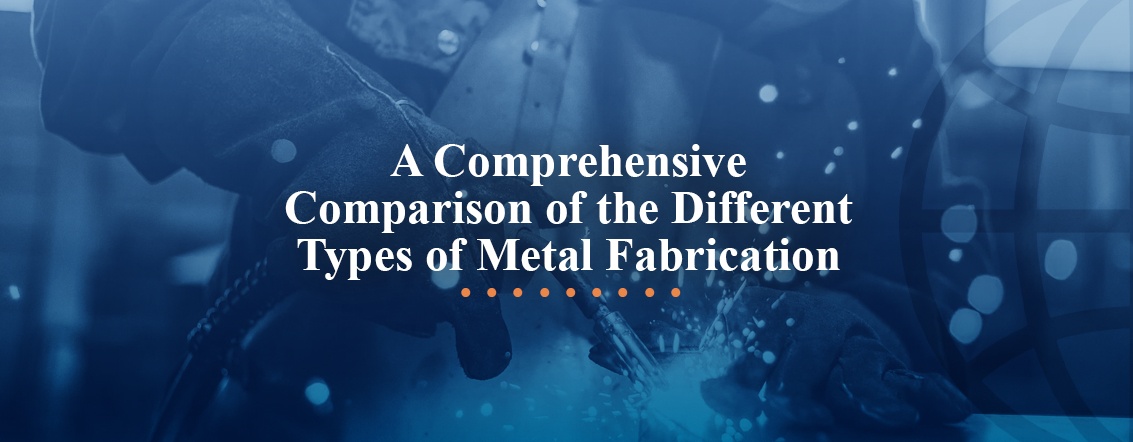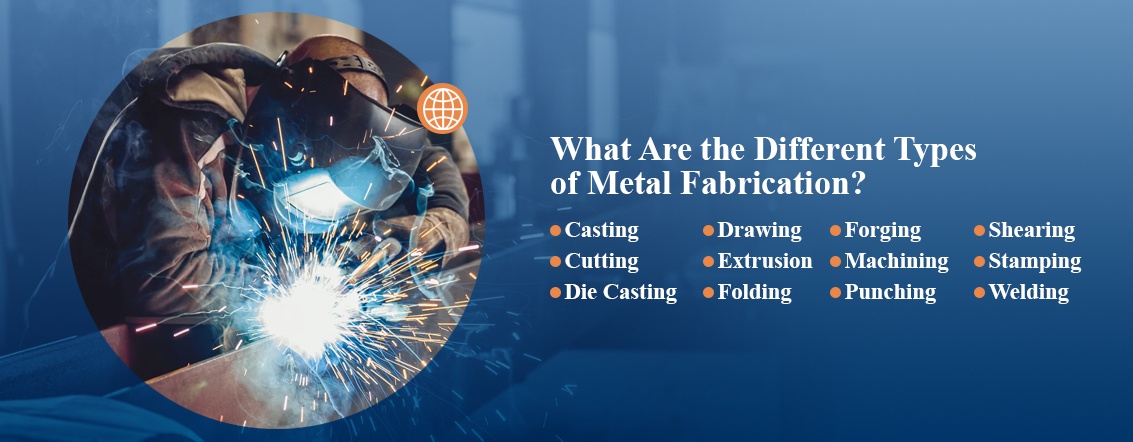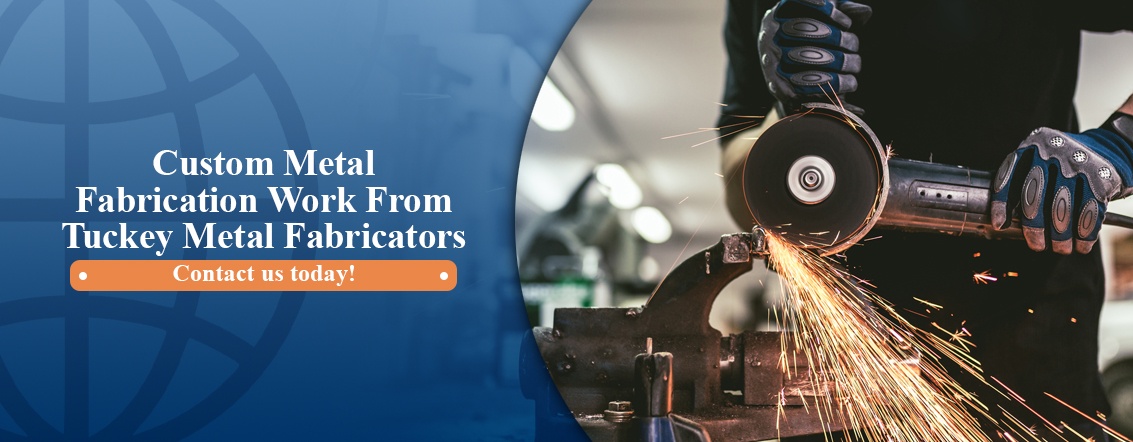A Comprehensive Comparison of the Different Types of Metal Fabrication
April 3, 2020 | 3:18 pm
Homeowners and commercial businesses take on a multitude of projects throughout the year. But what happens when you don’t have the correct parts to build a staircase, construct a building or complete an HVAC system?
Tuckey Metal Fabricators, Inc. provides custom fabrication solutions, on-site welding, millwrighting services, expert rigging and industrial maintenance to support you in every way possible.
What Are the Different Types of Metal Fabrication?
Metal fabrication is when raw materials are made into shapes for various assemblies. For example, everything from automobile frames and tools to utensils and chairs relies on these complex processes to support different industries and homeowners.
The different types of metal fabrication include:
1. Casting
Casting is where molten metal is poured into a mold until it solidifies, forming a vast range of complex shapes for mass production. It’s one of the more flexible methods that can shape steel, gold, iron, copper, magnesium and silver. Casting involves many types, like die-casting and semi-permanent.
2. Cutting
Cutting is one of the most commons processes and is often the first step in a fabrication project. It’s where pre-shaped metal or sheets of material are split into smaller sections. You can cut material using various techniques like plasma torching, sawing, waterjet cutting or laser cutting by using a computer numerical control (CNC) tool or power device.
3. Die Casting
Die casting is similar to casting, but it uses a die instead of a mold. Liquid metal is pushed into a die with extreme levels of pressure until the material hardens.
4. Drawing
Drawing is when a die stretches the material into a thinner shape. It uses tensile force to push the metal into a tapered die. It can be completed at room temperature or under heat.
5. Extrusion
Extrusion is where a piece of metal is pulled through or around a closed or opened die. If forced through the die, the material’s diameter will reduce to the cross-section of the die. If forced around, the process will create a cavity.
6. Folding
Folding is a more complicated type of fabrication where you manipulate a metal surface into a specific shape at a predetermined angle. The procedure often uses a brake press and other high-tech pieces of equipment to bend the metal.
7. Forging
Forging is one of the oldest fabrication types. The method uses compressive force by using a die or hammer to strike the metal piece into the desired shape. The three ways you can perform the process are through cold, warm or hot forging.
8. Machining
Machining is when a machine like a lathe removes parts of a metal piece. A lathe rotates the metal against various tools to cut the edges and corners into a particular shape with precise measurements. You can also form holes during the machining phase by using a drill.
9. Punching
Punching is used to produce holes by placing a piece of metal between a punch and a die. It’s often used for fastening latches. Blanking is a method that uses a specialized punch to make numerous pieces at once.
10. Shearing
Shearing generates longer sheet metal cuts. You can feed the sheet horizontally or vertically through a machine, or you can place the material below an open cutter and lower the blade.
11. Stamping
Metal stamping is when a press forms indentations into the metal to create a raised surface. The process does not penetrate the material. Instead, it makes letters, shapes and images.
12. Welding
Welding is when you join two pieces of metal, such as panels, sheets or bars. It’s also one of the more common fabrication processes for both professionals and enthusiasts. Welding involves the application of heat and pressure along the area where two parts meet at a joint.
These standard methods of metal fabrication can cut material, bend metal and forge a multitude of shapes to accommodate thousands of applications.
Comparison of Different Types of Metal Fabrication
Because the fabrication process encompasses more than a dozen methods, it’s important to understand how each type of metal fabrication differs. But what’s more, there are four other terms to be familiar with — manufacturing, production, fabrication and finishing.
- Manufacturing: Manufacturing is when raw materials are converted into physical products.
- Fabrication: Fabrication is the construction of products by using diverse but standardized parts.
- Production: Production takes the resources from the fabrication phase and combines them into useful products or services for consumption.
- Finishing: Metal finishing is a process that treats the exterior of a metal solution with a thin layer — for example, powder coating, metal coating and sandblasting.
Manufacturing vs. Fabrication
The difference between manufacturing and fabrication lies in their processes. Manufacturing is the assembly of raw materials, while fabrication is the making of those assemblies for parts. During the manufacturing process, a company acquires raw material then processes it.
Generally, the process of manufacturing:
- Converts raw materials into finished goods.
- Only results in tangible assets for sale to another company.
- Relies on workers, machines and materials.
However, the process of fabrication:
- Assembles the standard parts to build a product.
- Refers to many processes, like folding, cutting and welding.
- Uses a range of tools and devices.
As an example, manufacturing structural steel is when you combine raw materials to produce many parts. The fabrication phase will then make an entire steel structure by combining those parts. Although manufacturing and fabrication are often interchanged, they involve different stages. Manufacturing is step one, while fabrication is step two.
Fabrication vs. Production
Fabrication and production are also two terms that are incorrectly used interchangeably. Production is the formation of many fabricated structures to create a final product. During the production process, a company owns the parts and converts them into goods or services.
Generally, the process of production:
- Can be tangible or intangible.
- Doesn’t always rely on machinery.
- Transforms finished goods into an output source.
For example, the first step to engineering a car involves the manufacturing process. It will create parts from raw materials. The fabrication process will take those parts to engineer various car components, such as a frame, chassis, front end and door panel. Production is the final phase that combines the fabricated parts to form a complete product.
Production converts all the resources you have into a finished creation or service for consumers.
Fabrication vs. Welding
Metal fabrication involves many processes, and welding is one of them. The two terms are different from one another, but go together.
Welding is when you join two pieces of material using fusion, while fabrication is a process that evolves through many phases — including design, formation and finishing. Welding uses many specific practices, such as gas metal arc and oxy-acetylene welding, and fabrication uses overarching processes like die cutting, stamping and stretching.
Generally, the process of welding:
- Does not involve cutting, designing or forming.
- Demands specialized safety gear, like welding helmets and respirators.
- Joins two pieces of metal.
- Uses a different set of tools like torches and welding clamps.
In most cases, fabrication consists of multiple steps and processes to create a single product, while welding is more straightforward.
Custom Metal Fabrication Work From Tuckey Metal Fabricators
Tuckey Metal Fabricators provides any type of custom metal fabrication work for industries like construction, specialty manufacturing and HVAC divisions. Common applications we construct range from OEM parts and ductwork to custom pieces for architectural projects. We commit to a high level of excellence to help your operations be more productive, and we are an industry leader to homeowners and businesses within the South Central PA region.
Browse our custom fabrication services or contact our support team online to discuss your next tailored fabrication project. Tuckey Metal Fabricators can take the lead on any of your fabrication needs with high-caliber solutions.
All material Copyrighted (c) by the Tuckey Companies, 2025.




